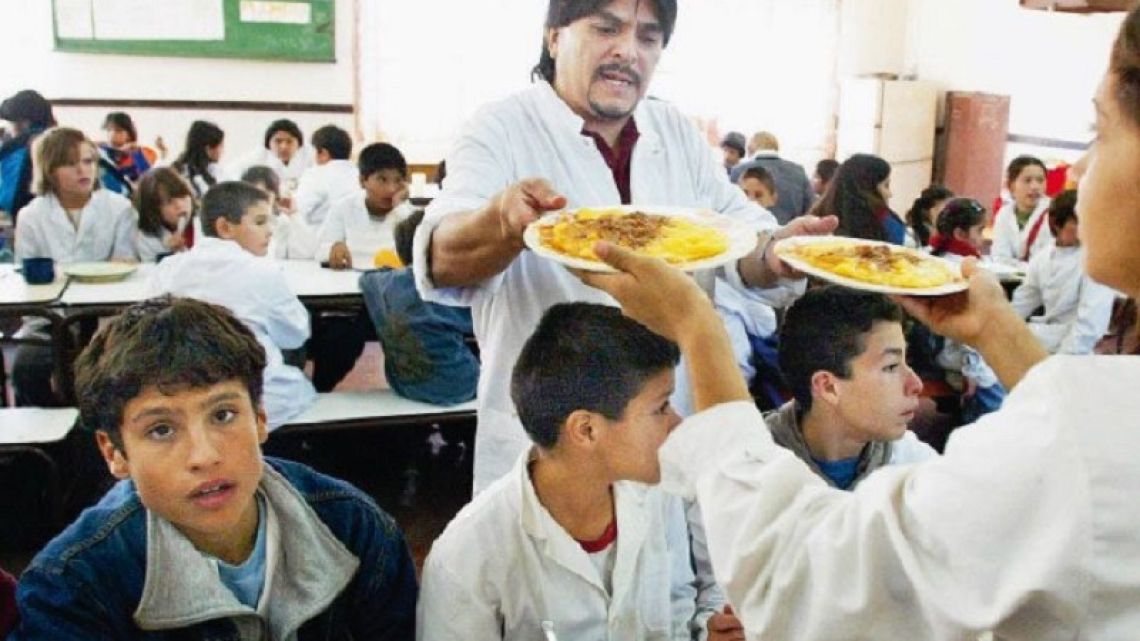Beyond its educational function, in recent years, and based on the repeated socioeconomic crises that the country experienced, and is experiencing, the state management school went on to fulfill another role as or more important than the education itself. And it is the one that has directly to do with that of the daily food received by children who attend school cafeterias.
In this sense, the data provided by the Observatory of Argentines for Education They take on relevance and maintain that in the last eight years student attendance at public school cafeterias grew by 21%.
During 2022, 1,860,000 students received free lunch in state schools
According to statistics, during 2022, 1,860,000 students received free lunch in state schools, that is, 323,000 more than in 2014. This figure represents an increase of 21% in 8 years, and is well above the increase recorded in enrollment (+6%). In the same period, meanwhile, the number of children who received breakfast in state schools also increased by 21.3% and reached 2,843,000 students.
The data emerged from the report “Feeding programs in state-run schools”, which was prepared by the Observatory of Argentines for Education, and which bears the signatures of Cecilia Adrogué (Universidad Austral and UdeSA-Conicet), Eugenia Orlicki and Leyre Sáenz Guillén (Observatory of Argentines for Education).
According to the report, during 2014, 1 in 5 students (20%) received lunch in state schools. While during 2022 the figure increased to almost 1 in 4 (25%). The number of students receiving breakfast also grew five percentage points, going from 32% to 37% in those years.
Attendance at school cafeterias is higher among the most vulnerable. In the first quintile (that of children with the lowest socioeconomic level), almost half (45.1%) of the students from 5 to 11 years old attend a school cafeteria. The percentage drops to 40.6% for students in the second quintile and 16% for those in the richest quintile. These inequalities are also registered among students between 12 and 17 years old. In this age group, 26.5% of the most vulnerable students (quintile 1) attend a school cafeteria, while in the middle quintiles the percentage ranges between 10% and 13%. Meanwhile, in the richest quintile, the figure is 7.7%.
When attendance is analyzed by type of day the student attends, it is observed that 86% of those who attend full-time receive lunch, while among those who attend single-day, 22% receive it.
Argentina is one of the Latin American countries with the greatest learning inequality
“School cafeterias in difficult socioeconomic contexts fulfill a rol fundamental. They have in their hands the opportunity to healthily feed the new generations of Argentines, who in many cases are deprived of it in their homes. Healthy nutrition also contributes to learning,” said Adrogué. And he added: “There is not a single school feeding scheme, but there are many and varied. On the other hand, the budget is usually limited. The fact that many kids are already attending is a first step: the next would be to improve what is offered to them, with a good nutritional plan, and with sufficient funds.”
Sofía Moggia, secretary of Grupo Tateti, a civil association of godmothers and godfathers of rural schools, highlights the importance of the school cafeteria in this modality. “In rural areas, for example, access to a nutritious and healthy diet is difficult due to economic issues or isolation. Many times, the children who live in these environments feed exclusively on the meals that educational institutions can offer. In this sense, school feeding services are a facilitator to achieve adequate nutrition. This is one more aspect in which schools are invisible, and for which it is necessary to continue working so that children have access to their right.”
